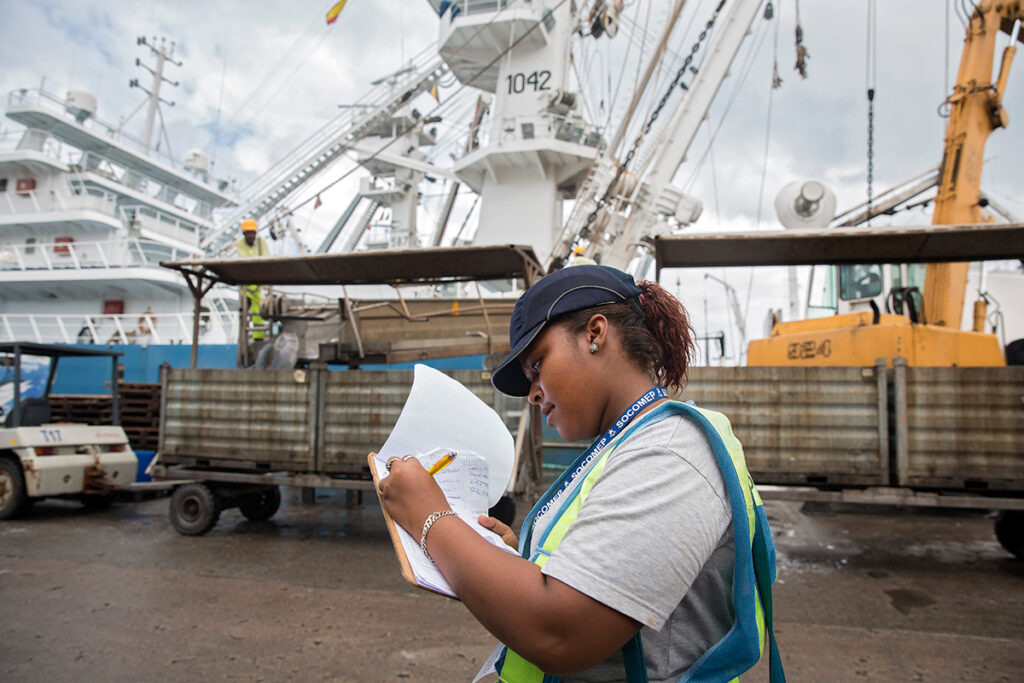More than one billion women and girls around the world face marginalization, injustice, discrimination and violence, so in order to achieve the goals of the Sustainable Development Goals it is essential to gender equalityhe emphasized Antonio Guterres.
Within the framework of the International Women's Day the 8th of March, the Secretary General of the United Nations, the United Nations stressed that the women's empowerment can be a boost to economies and aid in the peace process, however, changes must happen faster than the current pace.
"On International Women's Day, we celebrate women and girls around the world and applaud all that they have achieved in the fight for equality. Women and girls have made great achievements, breaking down barriers, dismantling stereotypes and driving progress toward a more just and equal world. However, they face immense obstacles," she acknowledged.
Guterres said the world still reflects millennia of male-dominated power relations and progress is under attack with a fierce backlash against women's rights.
"At the rate we are going there won't be legal equality for another three centuries or so. We must move much faster. On International Women's Day we stand with women and girls fighting for their rights and pledge to accelerate progress," she said.
The UN Secretary General stated that this year's theme is called "Investing in women: accelerating progress."which reminds us that ending patriarchy requires money.
"We must support women's organizations that are on the front lines and we must invest in programs to end violence against women, and fight for women's inclusion and leadership in economies, digital technologies, peace building and climate action," she said.
All of this is contingent upon funding being made available for the sustainable developmentThe report also said that the countries have funds available to invest in women and girls, she said.
Guterres added that there should also be a push to increase the number of women leaders in business, finance, central banks and finance ministries, as this can help to ensure investment in policies and programs that respond to the needs of women and girls.
"Women's rights are the best option for just, peaceful and prosperous societies. This is good for the whole world. Together, let's act now to make it happen," she said.
What does the Global Gender Gap Index 2023 say?
The Global Gender Gap Index (IGBG) is an indicator developed by the World Economic Forum which evaluates the gender gaps in several countries in terms of health and survival, education, economic participation and opportunities, and political empowerment.
This tool was first introduced in 2006 to measure and compare gender disparities in 146 countries around the world.
The IGBG 2023 found that, although the score of global parity has recovered to pre-pandemic levels, the overall rate of change has slowed significantly.
These were the results in the four sub-indices evaluated:
Health and Survival
It shows the highest level of gender parity worldwide (96%), as well as the most clustered distribution of scores. Most countries (91.1%) register at most 2 percentage points above the average, and only a handful of others (13 out of 146) register at most 2.4 percentage points below the average. Twenty-six countries, mostly in Europe, Latin America and the Caribbean, and Sub-Saharan Africa, show the highest score: 98% of parity. While Qatar, Vietnam and populous countries such as Azerbaijan, India and China score below 95%.
Education
Educational attainment is the sub-index with the second highest global parity score, and only 4.8% of the gender gap remains to be closed. Looking at the subset of 145 countries included in 2022 and 2023, the number of economies with full gender parity in educational attainment has increased from 21 to 25.
Scores across countries in this dimension are less dispersed than in those for economic or political participation. Empowerment sub-indices, where the majority (80.1%, or 117 out of 146) of participating countries have closed at least 95% of their gender education gap.
Like last year, Afghanistan is the only country where the gender parity score in education is below the 50% mark, with a 48.2%. At the bottom of the distribution, we also find the sub-Saharan countries of Chad, the Democratic Republic of Congo, Guinea, Angola, Niger and Mali, all with scores above 60%, but below 80% in educational parity.
Participation and Economic Opportunities
The range of scores in this year's gender gap in Economic Participation and Opportunity has not changed since last year: the difference between the highest scores (89.5%) and the country with the lowest scores (18.8%) remains wide (70.8%).
Countries reporting relatively even access for men and women in terms of economic participation and opportunity include economies as varied as Liberia (89.5%), Jamaica (89.4%), Moldova (86.3%), Lao People's Democratic Republic (85.1%), Belarus (81.9%), Burundi (81%), and Norway (80%). At the bottom of the distribution, in addition to Afghanistan, countries that achieved less than 40% of parity include Algeria (31.7%), Iran (34.4%), Pakistan (36.2%) and India (36.7%).
Political Empowerment
It once again registers the largest gender gap, with only 22.1% of the closed gap and the largest dispersion of scores between countries. Iceland stands out as the best performing country, with a parity score of 90.1%, 13.6 percentage points higher than the second place country (Norway) and 69 percentage points above the global average score (21.1%).
In addition to the top two, only 10 other countries out of the 146 included this year score higher than 50% for parity.
Sources: UN, World Economic Forum


